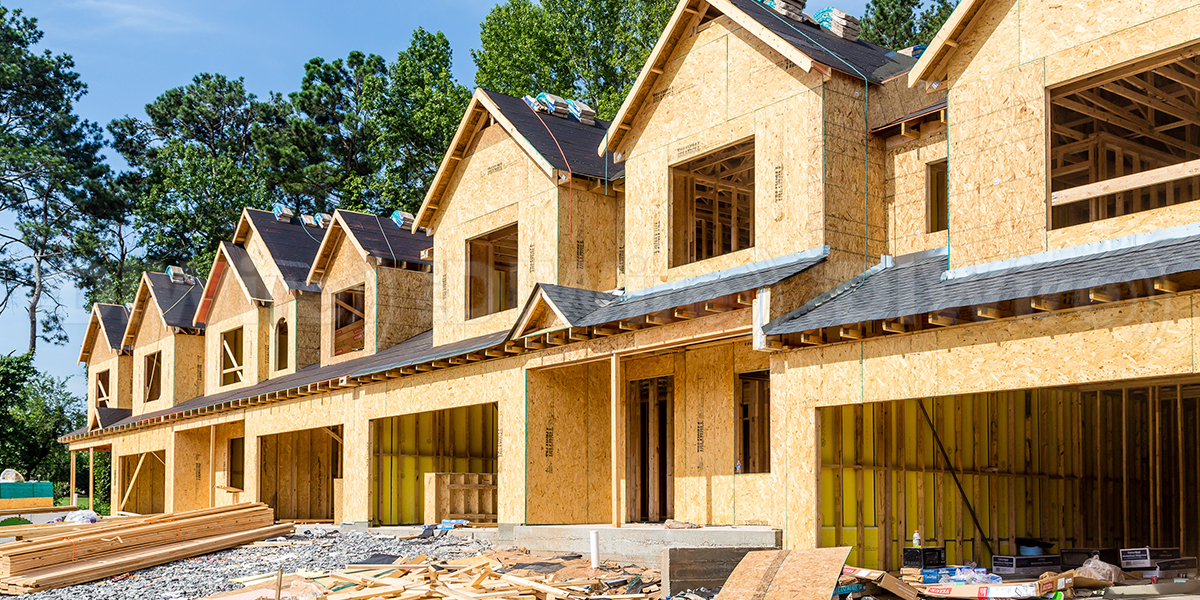Sponsored Content: Land Banking Is an Alternative Approach to Real Estate Investment

By Katie Hubbard, senior vice president of capital markets, Walton Global
Real estate has long been a cornerstone of wealth creation, and savvy investors are constantly seeking new avenues to maximize returns. While the commercial sector was once deemed the most viable place for investors to allocate their capital, the focus has more recently shifted toward the dynamic realm of residential – for many reasons.
Over the last few years, the top publicly traded homebuilders in the United States have continued to outperform, and their stock prices are at an all-time high as a result. In fact, real estate conglomerate Berkshire Hathaway has demonstrated confidence in the housing market’s potential by investing over $700 million in D.R. Horton stock, as well as other homebuilders like Lennar Corp. and NVR Corp.
One cause of this success is the rapid pace of consolidation within the homebuilding space. These homebuilders have the technology, resources and capital necessary to further perpetuate their own success – subsequently allowing them to continue gaining market share over their competitors. Top homebuilders have also engaged in mortgage rate buydowns, making new home sales more attractive than resale homes. While investing in homebuilding has proven to be a fruitful endeavor, what about investing in the land behind it all?
Since its inception, our team at Walton Global has focused our efforts on predevelopment land across the country that’s situated within paths of growth. We utilize a multiprong investment strategy that involves carefully selecting and acquiring suitable parcels of land, managing the land during the holding period, and ultimately divesting that land for a projected overall profit. Essentially, we are “the land bank” for America’s top homebuilders.
The 2008 housing crisis made it difficult for homebuilders to buy long-term land that does not produce cash flow within the first two years. When working with Walton Global, homebuilders can take advantage of off-balance sheet financing strategies to fulfill their just-in-time inventory needs, enabling them to postpone these land costs. This approach enhances builders’ liquidity, allowing them to allocate capital to constructing and selling homes. This trend is reflected in builders’ financial reports, with fewer liabilities on their balance sheets.
Through Walton Global’s platform, there are many long-term opportunities for investors at any level. This is due to an insatiable appetite for capital from homebuilders that don’t want to pursue traditional lending and financing avenues. Walton Global possesses a unique ability to identify, secure, hold, manage, and monetize land assets. Our team of land experts work with homebuilders to help them understand the ins and outs of the land behind the investment, ultimately allowing them to focus their efforts on developing sustainable communities for present and future generations.
Of course, there are many myths and misconceptions when it comes to land investments. First and foremost, there’s concern that land investment opportunities are not widely accessible and the ones that are come with little-to-no cash flow. While it’s true that this type of investment used to only be attainable for institutional and high-net worth families, it’s since become a more viable option for many others. In addition to making investing in land more accessible, Walton Global’s platform also makes cash flow possible.
There’s also misinformation regarding how long land must be held before being able to turn a profit. Monetization can happen quickly, depending on factors such as zoning flexibility, location, and infrastructure. In leveraging these elements, developers have a greater opportunity to swiftly transform parcels of land into lucrative ventures.
Another common misconception is that in the current economic climate, people are not purchasing homes. However, this will not last forever and a combination of continued economic strength, lower inflation, and lower mortgage rates will bring potential buyers back into the market – which is something we’re already starting to see. After all, there is pent up demand that will drive the need for 2 million new homes every year for the rest of the decade.
Lastly, it’s a common misconception that purchasing a newly constructed home is much costlier than pursuing an existing home. The spread, in reality, between new and existing home prices continues to narrow. Since 2010, newly constructed homes tended to be nearly 27% more expensive than existing homes, whereas today, this gap has shrunk down to a mere 6%. To put it into perspective, the median sales price of a new home as of August 2023 came in around $430,300, while the median sales price for an existing home was around $404,100.
There are many factors that contribute to the rise in residential real estate investment activity. Walton Global’s focus on pre-development land provides investors with unique opportunities for growth, supported by the success of top homebuilders and ongoing demand for new homes. Despite misconceptions, residential real estate remains a lucrative venture, making investment in land behind development a compelling strategy for long-term prosperity in the evolving market.
About Walton Global
Walton Global is a privately owned land asset management and real estate investment company that provides alternative investment solutions targeting income and growth for investors. Founded in 1979, Walton Global has $3.4 billion in assets under management and more than 93,000 acres of land under ownership, management, and administration in the United States and Canada.
Walton Global is a sponsor of The DI Wire, and the article was published as part of their standard directory sponsorship package.


